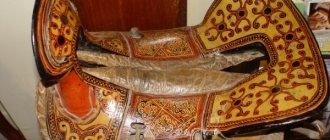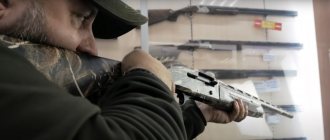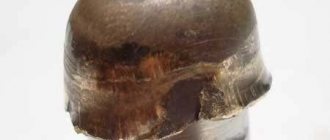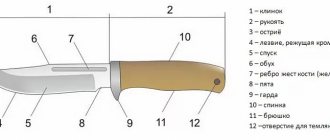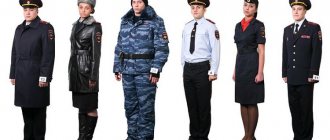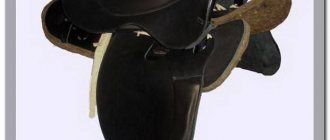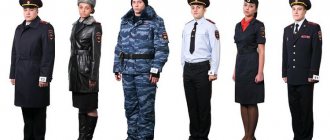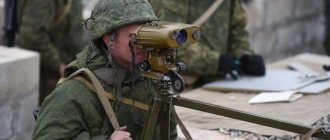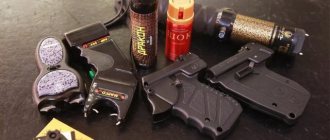Requirements for knives
The knife must be sharp. This is an axiom. Because its main task is to cut. It must remain sharp for as long as possible, which means that high-quality steel must be used for its manufacture. In this regard, by the way, knives especially stand out.
The described tool should be convenient. Sometimes the same model seems suitable to one person, but not to another. This is due to the individual characteristics of the muscular system and hand size. It happens that at certain periods of life the instrument that suits us best is the one that previously seemed inconvenient. Therefore, buying a knife online is a risky endeavor. It's better to hold it in your hand before purchasing.
Each of the products or materials that require cutting with a knife has certain properties. They are taken into account by technologists at enterprises producing these tools. They carefully calculate the shape of the blade, the width of the sharpening, the direction of the tip, the presence of bends, and the shape of the heel. Materials for the handle are being developed. They are testing various forms to make holding the knife in your hand as comfortable as possible.
Tools from different manufacturers differ in appearance, quality of materials, strength and reliability. But still, the common features of knives for the same purpose remain.
Can I carry it with me?
Of course, having acquired a terrifying triangular blade, you want to show it off to your friends. Buying an original JagdKommando knife is difficult; the issue comes down not only to money. This model is considered a melee weapon, so in the free market you can only find a high-quality analogue of the original product.
Since the length of the blade exceeds 18 cm, it is impossible to walk freely on the streets with such a weapon. There is a high probability that the owner will be stopped by law enforcement officers and taken to the police station to determine the circumstances of carrying a dangerous object.
Knife as a weapon
Curved knives are often used when camping or fishing. But before you buy it, make sure you don't get into trouble with the law. The fact is that you cannot carry bladed weapons on the street or in transport. How do you know if the knife you are describing falls into this category?
Melee weapons in Russia are considered to be automatic and weighted tools with a blade longer than 9 cm, and throwing knives (curved ones are not included).
Knives, the blade of which is ejected from the sheath automatically, should not be carried with you. And it doesn’t matter how this happens: under the influence of a lever or gravity. There are special determination methods that take into account the protrusion of the heel, the size of the heel notch, its shape and the handle. Responsibility for carrying a bladed weapon is a fine.
Other countries have their own restrictions on carrying knives. In any case, it is better not to show it off by showing it off. Sheathe it and put it in your backpack. And you’ll get it when you really need it.
How to make it yourself
To make kukri with your own hands, you need to study traditional technology and photos of each phase of the process. Detailed drawings and technological maps will greatly facilitate the manufacturing process. The only problem may be giving the blade the characteristic “hawk wing” shape.
At home, the model is made from any scrap metal at hand: car and tractor springs, metal sheets 5 mm thick, bearing races.
A piece of suitable size is cut with a grinder, the workpiece is heated over a fire, and the hot sheet is given the required shape. While forging, the metal blank is periodically dipped into cold water. The finished blade is sharpened with a grinder at an angle of 20°, and finally processed with fine-grained sandpaper.
It is better to make the handle from oak wood. The handle blank is placed on the shank and attached with glue. A sanding machine makes the handle smooth.
Previous
Making knivesHow to make a handle for a knife
Next
National knivesTypes and characteristics of national Uzbek knives pchak
Curved knife for hunting
Curved knives are an indispensable working tool when hunting. They are needed as weapons, they are used to cut up carcasses and perform household work such as setting up a tent and making a fire. These processes cannot be completed with just a knife. Therefore, here you need to have several varieties of them with you. But you shouldn’t drag a set for all occasions through the forest with you. Therefore, you need to choose those that will help solve all the hunter’s problems.
Thus, a knife with a curved blade is convenient for sanding, trimming, and cutting. Its advantage is that it can cut a large area at a time without intercepting the tool or taking your hand off the carcass.
Myths and reality regarding the kukri knife
Currently, there are many legends associated with traditional Nepalese weapons. The funniest of them is the legend that says that it was possible to hunt tigers with a kukri. The hunter would sneak up on the sleeping predator and kill it with one hand. For those who are at least minimally familiar with the habits of predatory animals, it is obvious that it is impossible to sneak up close to a tiger. A huge predator will simply tear the hunter in half. Even a person armed with a modern rifle is not recommended to hunt a tiger alone.
The next legend says that a kukri, taken out of its sheath, should taste blood. If it was not possible to hit the enemy with it, the Gurkha had to cut his finger. In fact, this is only true if the person has undergone a ritual “Death Ceremony”. In other cases, any work could be done with a knife.
Another legend says that the kukri handle with an iron butt can be used as a hammer. In fact, it can only be used in this way in the most extreme cases, but you need to be prepared that the handle may fall apart.
Knives for tourism
When going on a hike, you also need to decide on the choice of tool. It seems that it is easier to carry a folding knife in a backpack - it weighs less and will not cut things. But in reality, such a knife will be of little help on a serious hike. A folding backpacking knife usually has short and thin blades. You won’t be able to chop branches with it, and you won’t be able to use the handle for household needs either. And a folding knife will break much faster than a regular one. It looks like it's only good for cutting sausage.
Therefore, if you are going on a hike and there is no one to help you, it is better to take a regular knife:
- It should be about 5 inches long.
- It is better not to take a knife with a hollow inside handle, because it is not intended for heavy loads. The knife can break under any load.
- You need to pay attention to the shank. You should not take compound knives on a hike with a shank that is smaller in size than the handle.
- The blade, which has grooves and is concave inward, is very sharp, but it will be difficult to sharpen it in the forest without the appropriate tool. Therefore, you need to take a knife with the blade extending upward.
- The handle should be comfortable. It should fit snugly and securely in your hand. Working with such a knife should not cause blisters or calluses.
- Please note that there is a protective ridge that will prevent your hand from slipping onto the blade and getting cut. This is of no use to you on a hike.
- It’s good if there is such protection for the hands on both sides. This will give you the opportunity to grip the knife differently, depending on the situation.
- A sheath made of leather or other durable material will help protect you and your belongings from damage. They should have a strap for convenience. The handle should also have a strap that will prevent it from falling out of the sheath.
The material for making such knives can be stainless steel or carbon steel. Stainless steel is less durable and dulls faster. Products made of carbon steel are more reliable, but they are susceptible to corrosion and rust. Experts believe that the best carbon steel is A2, and the best stainless steel is CPM 154.
What is golband for Pchak?
Bolster on pchak is called golband. This is a small strip connecting the handle and blade. Traditionally it is made from tin or an alloy of tin and lead. Increasingly, they are being replaced with sheet brass or cupronickel.
When choosing pchak for household purposes, it is better to refuse products whose holband contains lead. Upon contact with products, lead oxidation occurs. As a result, chemicals are formed that are hazardous to human health.
Regardless of the material used, the golband is decorated with floral ornaments in the national style. Expensive knives use precious stones for decoration, most often turquoise and mother-of-pearl.
Karambit
Let's find out what a curved knife is called in different countries. After all, on every continent, every people, especially ancient ones, have their own traditions and instruments. Most of them have their own historical names.
Karambit is a knife with a curved blade. Distributed on the island. Sumatra. It is usually sharpened on the inside. They work with such a knife from themselves, passing one of the fingers, usually the middle one, into a special ring. Hold in the hand with a reverse grip.
The karambit blade is small. The minimum value is 3 cm, the maximum is 10 cm. The shape is crescent-shaped. The handle is made of hardwood. There is a hole in its head for a finger. The handle is attached to the blade with a copper rivet. Karambit can have a sheath made of leather or wood.
There are other types of karambit - some without a ring, others with two blades at once.
There are curved knives, photos of which you can see in the article, that look like karambit, but are up to 30 cm in size. These are makan and bloodau. They are held in the hand with a direct grip.
Types of karambits
Despite the fact that only one type of curved Javanese knife is known in Russia (yes, the one with a black plastic handle), there are many more of them:
- The Minang is a traditional weapon of the Miningkbau people, strongly reminiscent of a sickle;
- Harimau Minang is a type of ordinary minang, a purely military weapon. The shape of the blade is similar to tiger claws, which is emphasized by the corresponding drawings. These two models have wooden rings on the handle;
- Taji karambits differ from previous models by the presence of a metal ring;
- Lavi Ayam - small blades for cockfighting;
- Burung - a knife resembling the beak of a bird of prey (another legend);
- Besar - Javanese fighting model, the blade is long and heavy;
- Kuku Mahan - distinguished by a slight bend in the blade.
It should not be assumed that the Javanese slaughtered each other in battle with karambits. This weapon was used only in extreme cases, when everything else broke or was lost. But local robbers and peasants used such blades as their main weapons. Hired killers also loved such blades. By smearing the blade with poison, one could be sure of the victim’s death from one scratch.
Currently, curved blades from Malaysia are experiencing a surge in popularity. Knives with serrated blades, folding models, and so on are created. Young people who see such a knife in computer games are eager to buy it. They are sure that karambit is a highly effective and terrible weapon.
Skinner
It is convenient to sand and rip open the peritoneum with a skinner. This is also a curved knife, but its blade flies up. The fact is that it is difficult to make long cuts with a knife with a falling edge. He will get in the way. To correct this situation, widen the blade and make the curved part larger. But because of this, its strength decreases and the knife may break. And it will be more difficult to sand in inaccessible places. You can't make a small cut with such a knife either.
In such cases, the straight part is increased. For example, with a blade length of 10 cm, the straight section will be 7 cm, and the bevel will be only 3 cm. At the same time, reduce the width of the blade. In the knives described, a flying tip would be more appropriate.
Skinner combines both types of curved knives. The main part of it has a flying tip. And on the side opposite to sharpening, there is a recess in the form of a hook. Thus, the skinner combines two tools. The main sharpening point is convenient for cutting, and the hook-shaped part is suitable for ripping open the peritoneum.
Product modifications
The usual length of the blade ranges from 200 to 400 mm, the thickness of the butt is from 8 to 12 mm. The knife is sharpened with a variable angle, thanks to which its cutting part can be used for cutting, planing, dissecting, and chopping.
In Nepal you can see various modifications of the knife, which differ in the shape of the blade and handle, weight and size. This is explained by the fact that kukris have different purposes. The following types of products are manufactured:
Local blacksmith schools make kukri of various shapes and weights. Carbon steel, obtained from railway equipment and decommissioned rails, was previously used as a material for making blades. Nowadays, blacksmiths use springs from buses and trucks. German products are in particular demand, less often - Japanese ones. Making kukri has the following nuances:
- Weapons are produced using ancient technology using hand forging. Hammers are often involved in its production.
- Zone hardening of the blade allows you to increase its strength and give it excellent cutting characteristics. The body of the blade is hardened to HRC 35-48, near the cutting edge - to HRC 56-58.
- The blade has the smallest sharpening at the handle, and the greatest sharpening in the middle part.
- There are two types of dols - chirra (wide and shallow) and khol (narrower and deeper). The first passes near the cutting edge, the second - near the butt. In large-sized antique products, the hall notch made it possible to reduce the weight of the blade.
- The handle of a traditional kukri used to be made of horn or precious wood. Usually it was mounted, less often - plate-shaped, fastened with rivets. Many surviving ancient specimens are equipped with items made of ivory or rhinoceros horn. Currently, brass, expensive hard wood, and aluminum alloys are used for this purpose. On inexpensive models, the handles are made of rubber-like plastic with an anti-slip treatment.
- The scabbard of an ancient combat knife was made of wood, covered with leather. They contained two more knives of a similar shape, but smaller in size. One small kukri was used for household work, the other was very hard and had a rough surface. It was used to light a fire and straighten the blade of a combat knife. Modern army kukris do not have additional knives.
Kukri
Kukri is the national knife of Nepal. There are two versions of its origin. According to the first, the knife ended up in Nepal with the army of Alexander the Great. According to the second, it was from Africa that he came to Greece and further to the Middle East. And that is why the scimitar looks like a kukri. The main feature of this knife is the presence of a “cho” - a special recess near the handle. In addition to symbolic meaning, it also has practical meaning - it protects the knife blade from cracks and chips.
The handle of the kukri is made of rosewood. It is usually decorated with various ornaments. The sheath is made from water buffalo skin. The head of the handle serves as the eye of God and is also used instead of a hammer.
Along with the kukri, two more small knives are used. One is used to cut small objects, the other is a dull piece of steel. Used to start a fire.
Copulating knife
A curved knife can also have an absolutely peaceful purpose. This is a tool designed for copulation. Anyone who has tried to pin one type of wood to another knows how difficult it can be to make an even cut with an ordinary straight knife. A copulating knife was invented specifically for this procedure - its blade is curved, and the cut is perfectly smooth.
The blade of this knife is made of carbon steel. And since it can rust, it needs to be lubricated after each use and during the winter.
A knife with a curved blade will help in the garden not only for copulation. It can be used to cut thin branches, roots, and stems. But the blade must be durable. Thus, a Japanese folding garden knife has a thickness of 3 mm. The handle is made of metal, but there are wooden overlays on top. Springs securely fix the blade.
Trailing point and clip point
Trailing point is another type of curved knife, in which the spine line is slightly raised. This way the blade length is longer. These knives are convenient for cutting soft materials. But it’s inconvenient to inject them. There are knives with a sharpened spine. This expands the scope of their application. They are convenient for cutting fish so that the gallbladder remains intact.
Clip-point knife with a bevel on the spine. Its tip is directed upward, but due to the “pike” bevel it turns out to be below the level of the butt.
What is the Uzbek knife Pchak?
Pchak is a knife originally from Uzbekistan with a wide blade, the tip of which is raised above the butt line. It is not a melee weapon.
The first mention of pchak dates back to the 14th century. According to legend, it was invented during the reign of Tamerlane. The great ruler feared riots. He did not ban the carrying of weapons, but instead ordered gunsmiths to make a knife that would not be scary in battle. This is how the pchak appeared. Because of the curved blade, it was almost impossible to inflict piercing wounds on them.
Despite its unsuitability for combat, the pchak turned out to be a very practical invention. In the 15th century they began to use it on the farm. It was convenient for them to cut different foods: meat, vegetables, fish.
Kitchen knives with curved blade
In the kitchen, sharp curved knives are needed no less than when hunting. The Victorinox company produces such tools, with a blade length of 25 cm. The tip here is directed upward towards the butt. As a rule, they are used for cutting carcasses.
It is also convenient to peel vegetables and fruits with knives with a curved blade. But its size should be smaller. The inwardly curved blade helps to cut the peel very precisely, without removing anything unnecessary.
Fiskars Functional Form knives are designed to be used every day.
Their cutting edge is made of anti-corrosion steel and sharpening is carried out using a laser. Therefore, they easily cut even hard vegetables. The handle is elastic and comfortable to use. A special anti-slip coating makes working with the knife safe. The fingers are held by the stop and are not damaged by the blade. It is securely fixed in the handle, which is achieved by injection molding. It turns out durable and hygienic. There are no gaps between the blade and handle where germs could collect.
The Functional Form curved blade paring knife is small and lightweight. Therefore, they can work for a long time without getting tired. This knife can be washed in the dishwasher.
For meat, a tool with a blade widened towards the tip and a raised butt line is suitable. Its size is larger than for peeling vegetables. A narrow curved knife file is convenient for cutting tomatoes.
Typical sharpening shapes
The cutting edge of the blade is the most important element of the knife. The cut of the product depends on its sharpening. The cutting edge can be processed in two ways, let’s look at them in more detail:
- The smooth sharpening familiar to us has two names - straight or plain from the English word “Plain”. This method is the most popular and has been known since the very beginning of using the blade. The sharpening angle also matters. At a small angle, it is convenient to work with hard materials; at a large angle, on the contrary, with softer materials.
- Serrated sharpening works great on fibrous materials. The sharpening looks like a saw, only the teeth are not set apart. This increases the length of the cutting edge, purely from a geometric point of view. This method of sharpening does not dull for a long time.
Also, some manufacturers make half of their blades with one type of sharpening, and the other half with another. This method of sharpening is called a semi-serrator. The scope of application of the knife determines its sharpening of the cutting edge. Each method is good for use in its area.
Fitter knives
A curved knife will also come in handy for fitters. With its help, it is easy and convenient to remove the insulation and sheathing of the cable. Clean the cores from the oxide film. Typically, such knives have a hole for attaching a carabiner. The point is falling, there is a protrusion near the handle that protects the hand.
The curved knife with three-layer electrical insulation is designed to operate under voltages of up to 1 thousand volts.
A folding pocket knife from China Ktk-pk031 consists of three blades, two of which are curved and have notches on the cutting surface. Stainless steel blades. Rubber handle. Blade thickness 2 mm.
You shouldn’t take such a knife on a hike, but it might come in handy for a light picnic.


